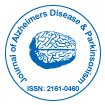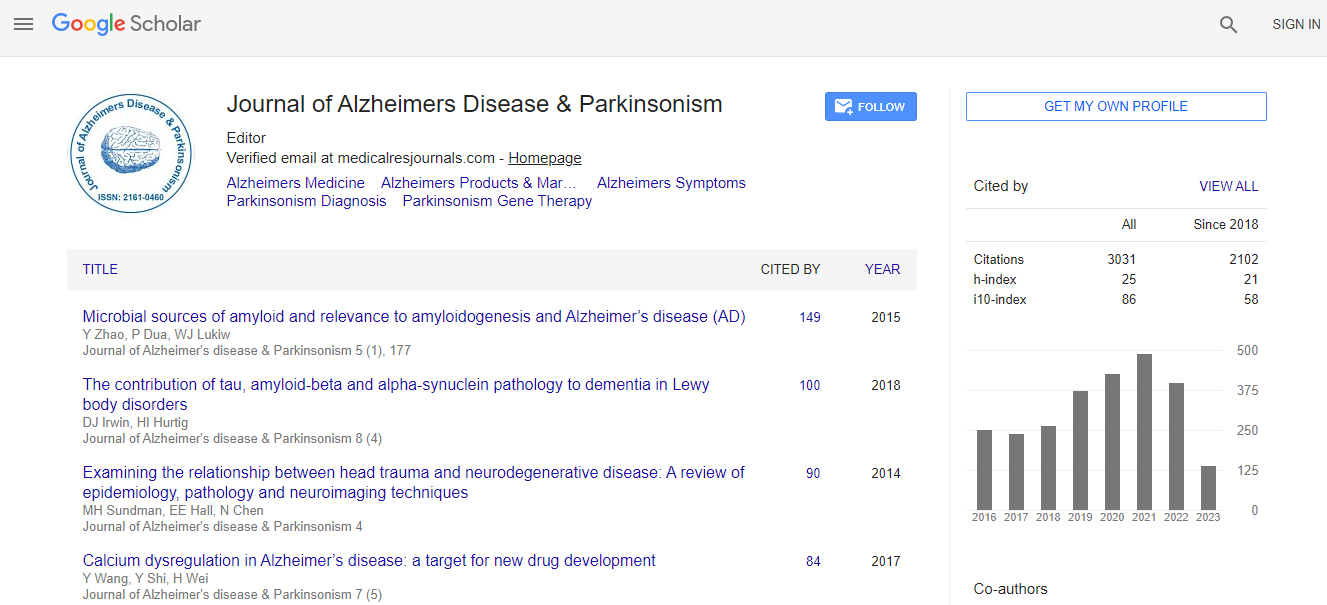Research Article
Neurofibrillary Tangle Predominant Dementia: Clinical and Pathological Description in a Case Series
Morgan Schwartz1, Thomas G Beach2, Andrew Tsai1, Michael Malek-Ahmadi3, Sandra Jacobson1, Lucia I Sue2, Kathryn Davis1, Marwan N Sabbagh1 and Geidy Serrano2*,
1The Cleo Roberts Center for Clinical Research, Banner Sun Health Research Institute, AZ, USA
2The Civin Laboratory for Neuropathology, Banner Sun Health Research Institute, Sun City, AZ, USA
3Banner Alzheimer’s Institute, Phoenix, AZ, USA
- Corresponding Author:
- Geidy E Serrano
Banner Sun Health Research Institute 10515 W Santa Fe Drive
Sun City, AZ 85351, USA
Tel: 623-832-5608
Fax: 623-832-5681
E-mail: geidy.serrano@bannerhealth.com
Received date: September 30, 2015; Accepted date: January 05, 2016; Published date: January 12, 2016
Citation: Schwartz M, Serrano G, Beach TG, Tsai A, Malek-Ahmadi M, et al. (2016) Neurofibrillary Tangle Predominant Dementia: Clinical and Pathological Description in a Case Series. J Alzheimers Dis Parkinsonism 6:204. doi:10.4172/2161-0460.1000204
Copyright: © 2016 Schwartz M, et al. This is an open-access article distributed under the terms of the Creative Commons Attribution License, which permits unrestricted use, distribution, and reproduction in any medium, provided the original author and source are credited.
Abstract
Objective: The aim of this study is to contribute to an understanding of the clinical presentation and pathological features of neurofibrillary tangle predominant dementia (NFTPD) that will assist with the eventual development of methods for its ante-mortem identification. Method: We contrast eight NFTPD cases identified in the Banner Sun Health Research Institute Brain and Body Donation Program (SHRI-BBDP) database to 114 Alzheimer’s disease (AD) subjects, in terms of their demographics, clinical features, and pathological features. Results: When NFTPD subjects were compared to AD subjects, they were found to have a later onset of symptoms, an older age at death, less impairment prior to death, and less frequent appearance of the Apolipoprotein E ε4 variant. None of the eight NFTPD subjects met the clinical criteria for probable AD. They possessed a diverse range of diagnoses including possible AD, mixed vascular dementia (VAD), dementia NOS, and dementia with Lewy bodies (DLB). AD-related pathology, for both amyloid plaques and neurofibrillary tangles, was less severe in NFTPD subjects than in AD subjects. All eight NFTPD subjects were classified as neurofibrillary tangle Braak stage IV and therefore had fewer tangles in the neocortex when compared to AD subjects with mean Braak stage V (range II–VI). Conclusion: NFTPD subjects have dementia despite a lower pathological burden when compared to AD subjects. In this small sample, the ante-mortem presentation is such that NFTPD subjects are not diagnosed with probable AD. The cognitive and non-cognitive clinical features (delusions, depression, parkinsonism, and hallucinations) of NFTPD and AD are very similar and do not serve as indicators for a diagnosis, but older age (>80), lack of an ApoE ε4 allele and less severe cognitive impairment should further inform the differential diagnosis of NFTPD from AD.

 Spanish
Spanish  Chinese
Chinese  Russian
Russian  German
German  French
French  Japanese
Japanese  Portuguese
Portuguese  Hindi
Hindi 
